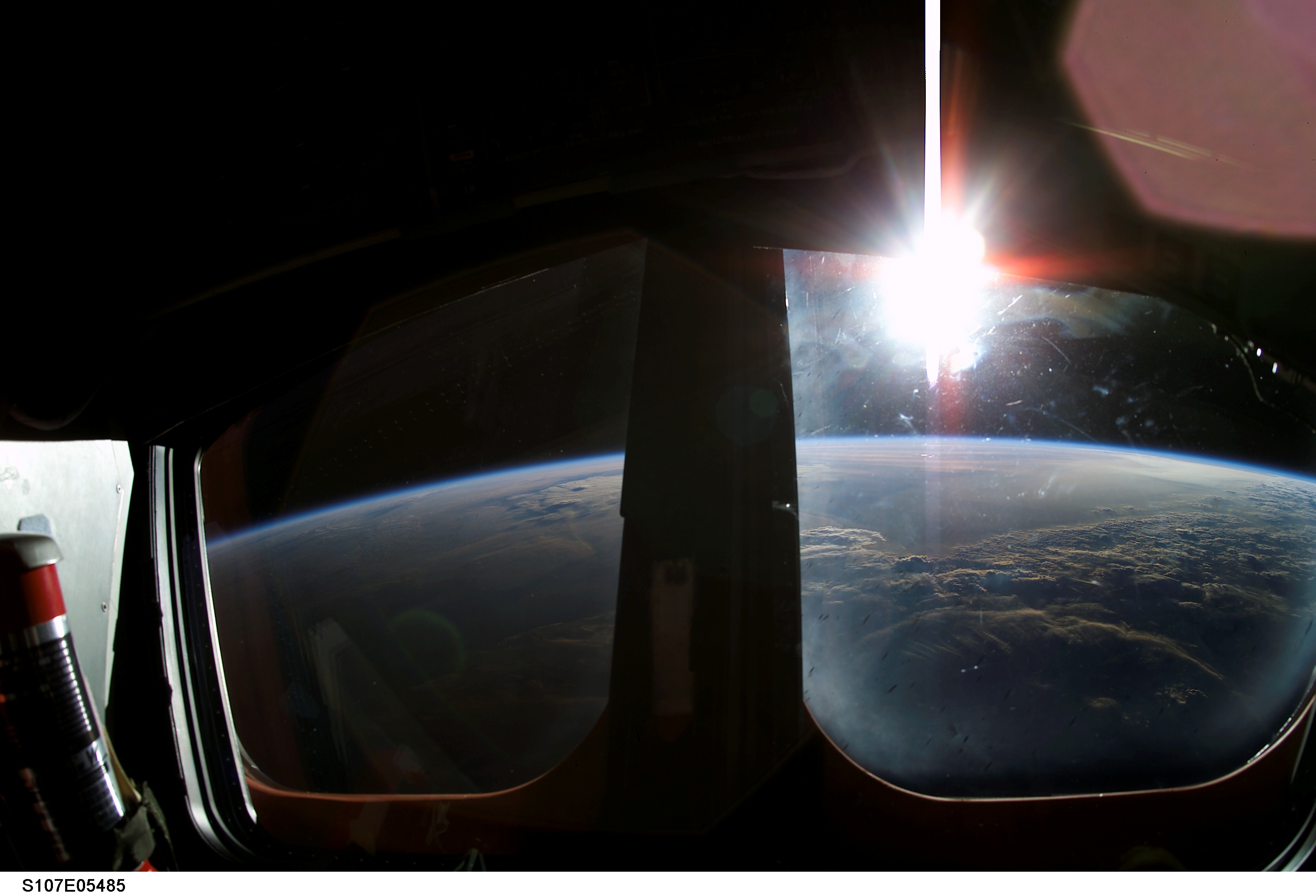
On this day, 1 February, in 2003, the seven-member crew of shuttle Columbia—Commander Rick Husband, Pilot Willie McCool, Mission Specialists Dave Brown, Kalpana Chawla, Mike Anderson and Laurel Clark and Payload Specialist Ilan Ramon, Israel’s first spacefarer—were lost during re-entry, after the otherwise hugely successful STS-107. For the past 16 days, Husband and his crew had supported more than 80 scientific experiments in the first Spacehab Double Module, in what was expected to be the last “standalone” science mission of the shuttle era.
What was also known about STS-107—although its true gravity would only become apparent that terrible February morning—was that Columbia had sustained a strike on her thermal-protection system during ascent. A briefcase-sized chunk of foam insulation had been spotted on launch video falling from her External Tank (ET) on 16 January and had impacted the shuttle’s left wing at precisely the spot where Reinforced Carbon Carbon (RCC) panels would later shield her against the extreme temperatures of re-entry. Concern was elevated for a time, but later dismissed.
It was a dismissal which would return to haunt NASA; a dismissal as ill-judged and as ill-conceived as declaring the Titanic to be unsinkable.
Columbia had launched at 10:39 a.m. EST on 16 January 2003 and her ascent to orbit proceeded smoothly. Scrutiny of the video footage offered little indication of what, if any, damage had been incurred by the foam strike, which took place at T+82 seconds, just after the shuttle had passed through an area of maximum aerodynamic turbulence. The impact was accompanied by a huge shower of particles, although it remained uncertain if they originated from the impact of the foam itself or from shattered RCC pieces. If it was the latter, this did not bode well for Columbia’s re-entry, for the panels helped to guard the vehicle against the brunt of 3,000-degree-Celsius (5,400-degree-Fahrenheit) extremes during the hypersonic return to Earth. Senior managers doubted that a foam strike—an event which had occurred on earlier missions—could possibly be a “safety of flight” issue.
This did not, however, preclude an analysis of a possible scenario in which the RCC had been breached. On 31 January, the day before Columbia was due to land, engineer Kevin McCluney offered a hypothetical description to his colleagues at the Johnson Space Center’s (JSC) flight control team of the kind of data “signature” they could expect to receive in the event that the worst should happen. Ironically, the signature described by McCluney—a temperature rise for the shuttle’s tires, brakes, strut actuator and uplock actuator return, an increase in tire pressures and gradual data-loss as electrical cables were severed by the superheated plasma—would almost precisely mirror the dreadful events which overwhelmed Columbia as her 28th and final mission drew to its tragic close.
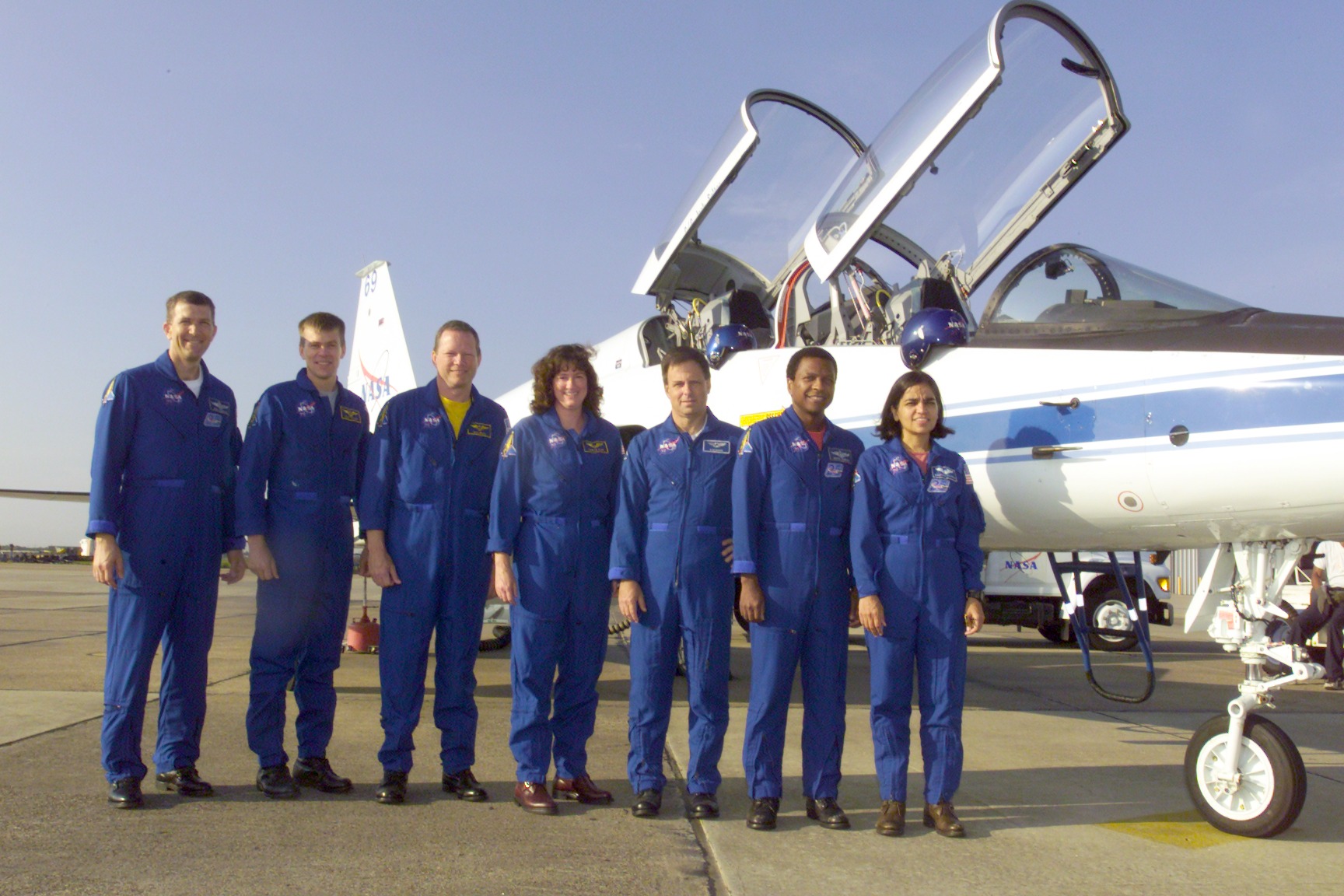
Targeted to land on Runway 33 at the Kennedy Space Center (KSC) in Florida on 1 February, Husband and McCool performed the irreversible de-orbit “burn” of Columbia’s Orbital Maneuvering System (OMS) at 8:15 a.m. PST, whilst 175 miles (282 km) over the Indian Ocean. The burn lasted 2.5 minutes and committed the shuttle and her crew to a landing, an hour later at 9:16 a.m., on the other side of the planet.
At 8:52:17 a.m. EST, nine minutes after entry interface—the point at which the shuttle began to encounter the tenuous upper traces of the “sensible” atmosphere—Entry Flight Director LeRoy Cain and his team saw the first unusual data on their monitors. Cain had begun his shift on console earlier that morning, with an up-tempo “Let’s go get ’em, guys,” before giving Husband the go-ahead for the de-orbit burn. Much of the entry profile was controlled by the shuttle’s General Purpose Computers (GPCs), as was normal protocol, but with 23 minutes remaining before touchdown, Maintenance, Mechanical, Arm, and Crew Systems (MMACS) Officer Jeff Kling saw something peculiar in his data.
It was what flight controllers termed an “off-nominal event”.
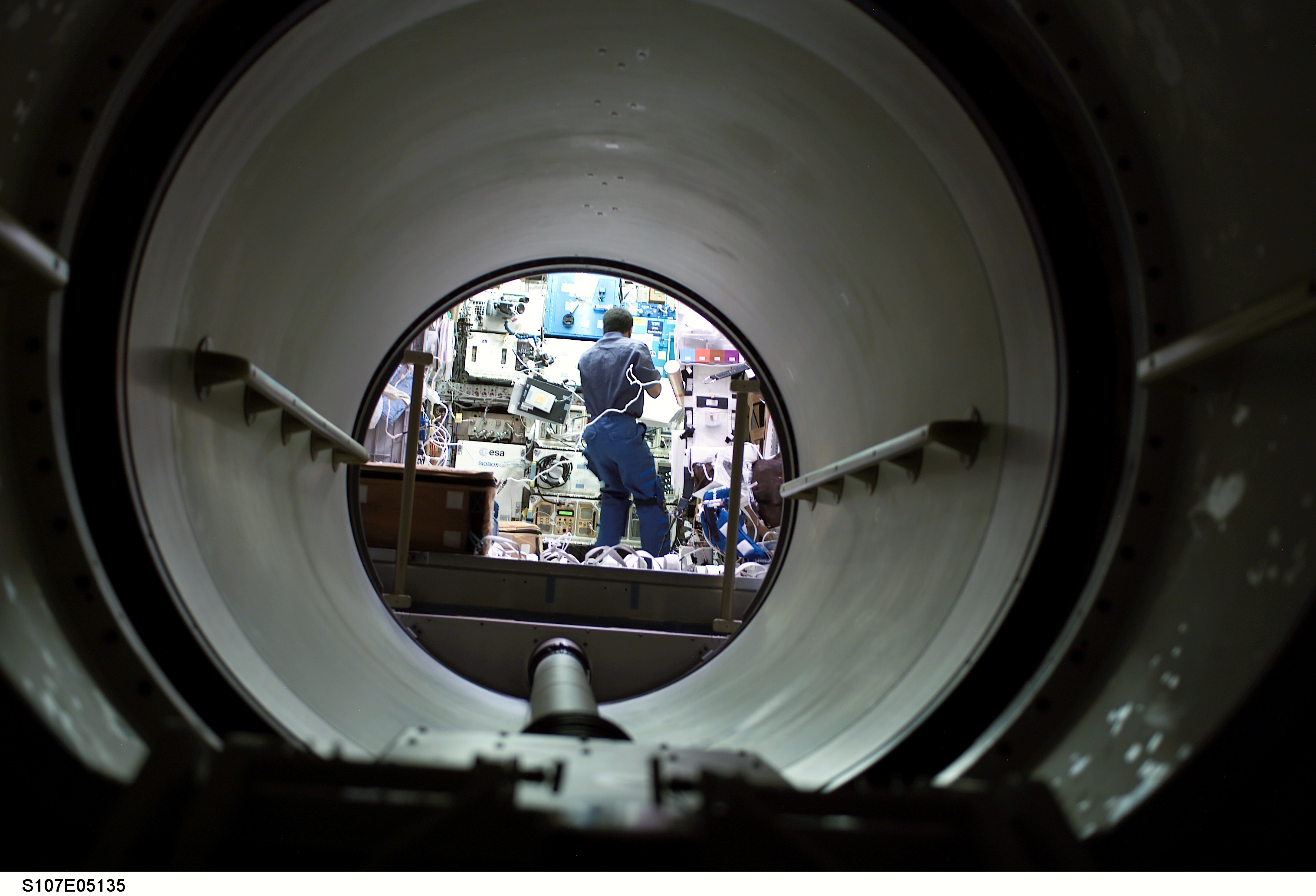
As later described by Michael Cabbage and William Harwood in their chilling account of the mission, Comm Check, Kling noticed that two downward-pointing arrows appeared next to readings from a pair of sensors deep within Columbia’s left wing. They were designed to measure hydraulic fluid temperatures in lines leading to the elevons. A few seconds later, two more sensors failed. The attention of Kling and his team was instantly captivated; it seemed that the wiring to all four sensors had been cut. They tried to fathom a “thread” to explain the fault, but could find no commonality.
Kling spoke directly to Cain. “I’ve just lost four separate temperature transducers on the left side of the vehicle,” he began, cautiously. “Hydraulic return temperatures. Two of them on System One and one in each of Systems Two and Three.”
“Four hyd return temps?” queried Cain.
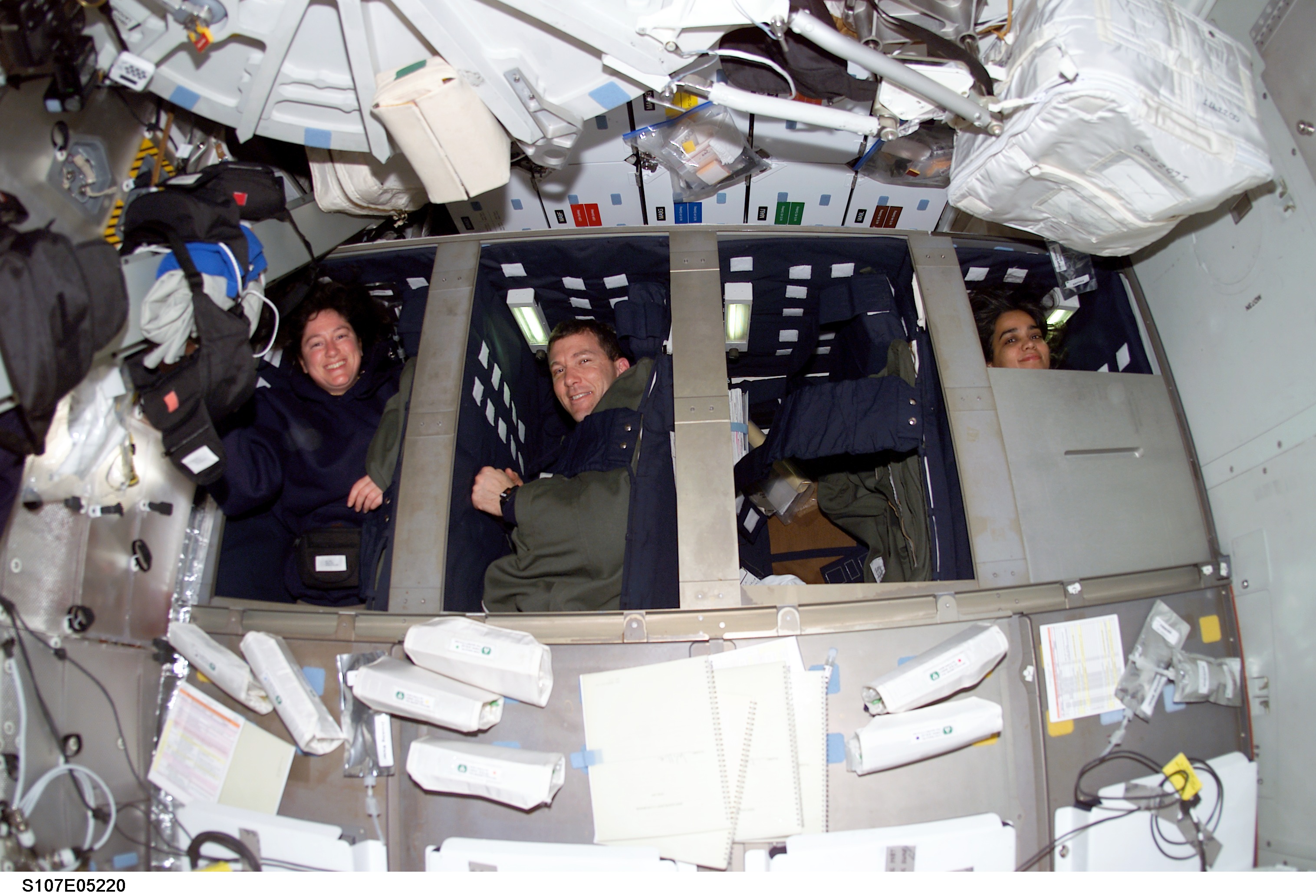
“To the left outboard and left inboard elevon.” Cain’s thoughts mirrored those of Kling: was there a common root cause for all four sensors to have failed in such close physical and temporal proximity to one another? When Kling asserted that there was “no commonality” between the failures, Cain was perplexed, but instantly thought back to the foam strike. In subsequent interviews, he would admit that his immediate fear was that hot gas had worked its way through a breach in Columbia’s left wing and was somehow affecting the interior systems. However, Guidance, Navigation, and Control Officer (GNC) Mike Sarafin assured him that overall vehicle performance as it crossed the California-Nevada state line at 22.5 times the speed of sound remained nominal. Was Kling happy with all other hydraulic systems? Kling replied that, yes, everything else was functioning normally.
Suddenly, at 8:58 a.m. EST, Husband made his first radio contact since entry interface a quarter of an hour earlier. He started to call Mission Control, but his words were abruptly cut off. A few seconds later came a loss of temperature and pressure data from both the inboard and outboard tires of Columbia’s landing gear in the left well. If the tires were holed or losing pressure, it was very bad news, for STS-107 was a “heavyweight” mission, with the fully-loaded Spacehab Double Module and an experiment pallet in her payload bay. A “wheels-up” belly landing was not expected to be survivable. The astronauts would need to perform a never-before-tried bailout, utilizing an escape pole system implemented after Challenger, but even this hazardous exercise could not be attempted until Columbia was at much lower altitude and at much lower airspeed.
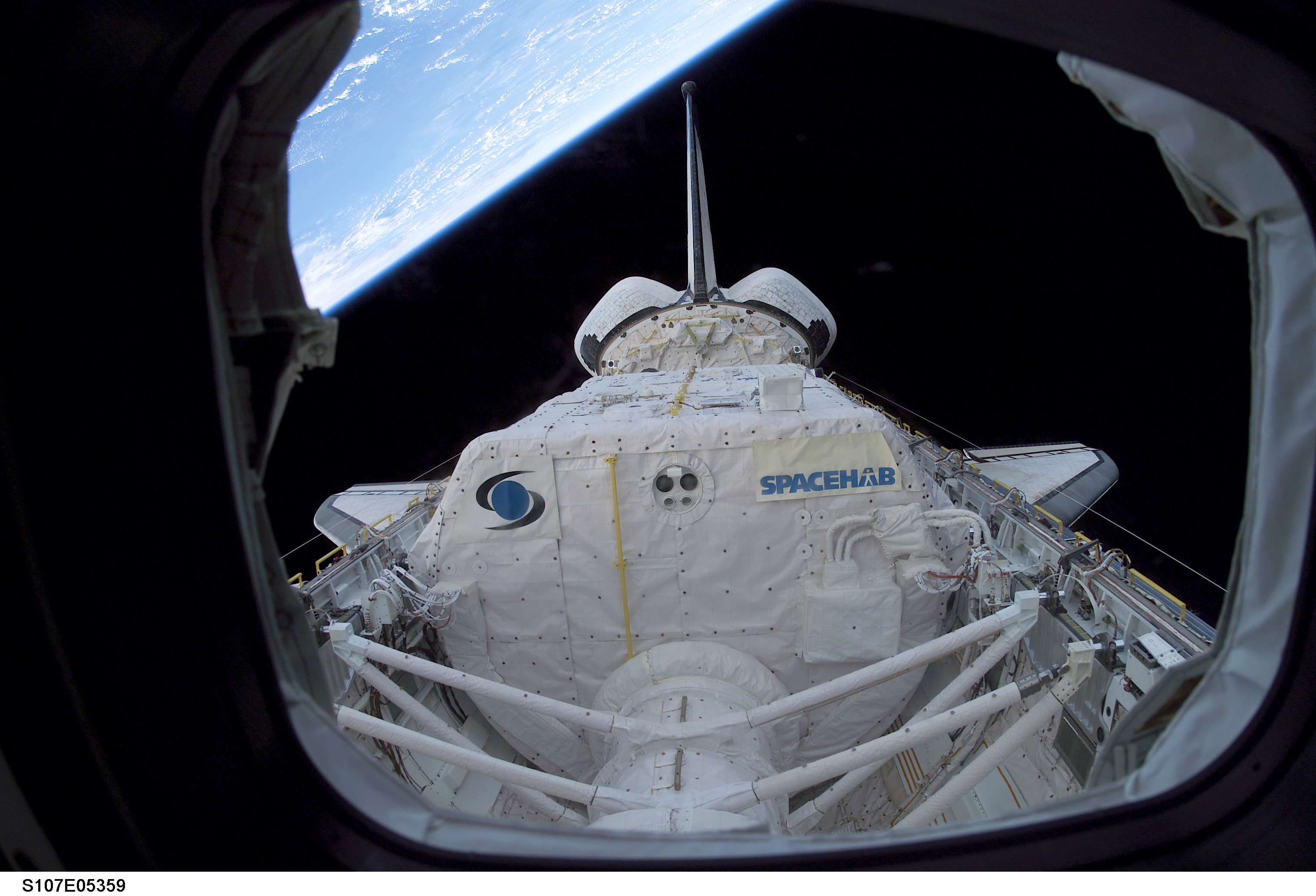
After hearing Jeff Kling’s report, astronaut Charlie Hobaugh—the lead Capcom on duty that morning and the man responsible for talking directly to the STS-107 crew—called Husband to inform him of the anomalous tire pressure messages. Hobaugh also asked Husband to repeat his last comment. There was no reply from the rapidly-descending Columbia. By now, LeRoy Cain was pressing Kling for answers on whether the messages were due to faulty instrumentation, but was advised that all associated sensors were reading “off-scale-low”. They had simply stopped working.
Seconds later, at 8:59:32 a.m., Rick Husband tried again to contact Mission Control. These were to be the last words ever received from Space Shuttle Columbia.
“Roger,” he said, presumably acknowledging Hobaugh’s earlier pressure call, “uh, buh…”
At that point, his words were cut off in mid-sentence, together with the flow of data from the orbiter. Communications were never restored. Thirty-two seconds after Husband’s partial transmission, a ground-based observer with a camcorder shot video footage of multiple debris contrails streaking like tears across the Texas sky.
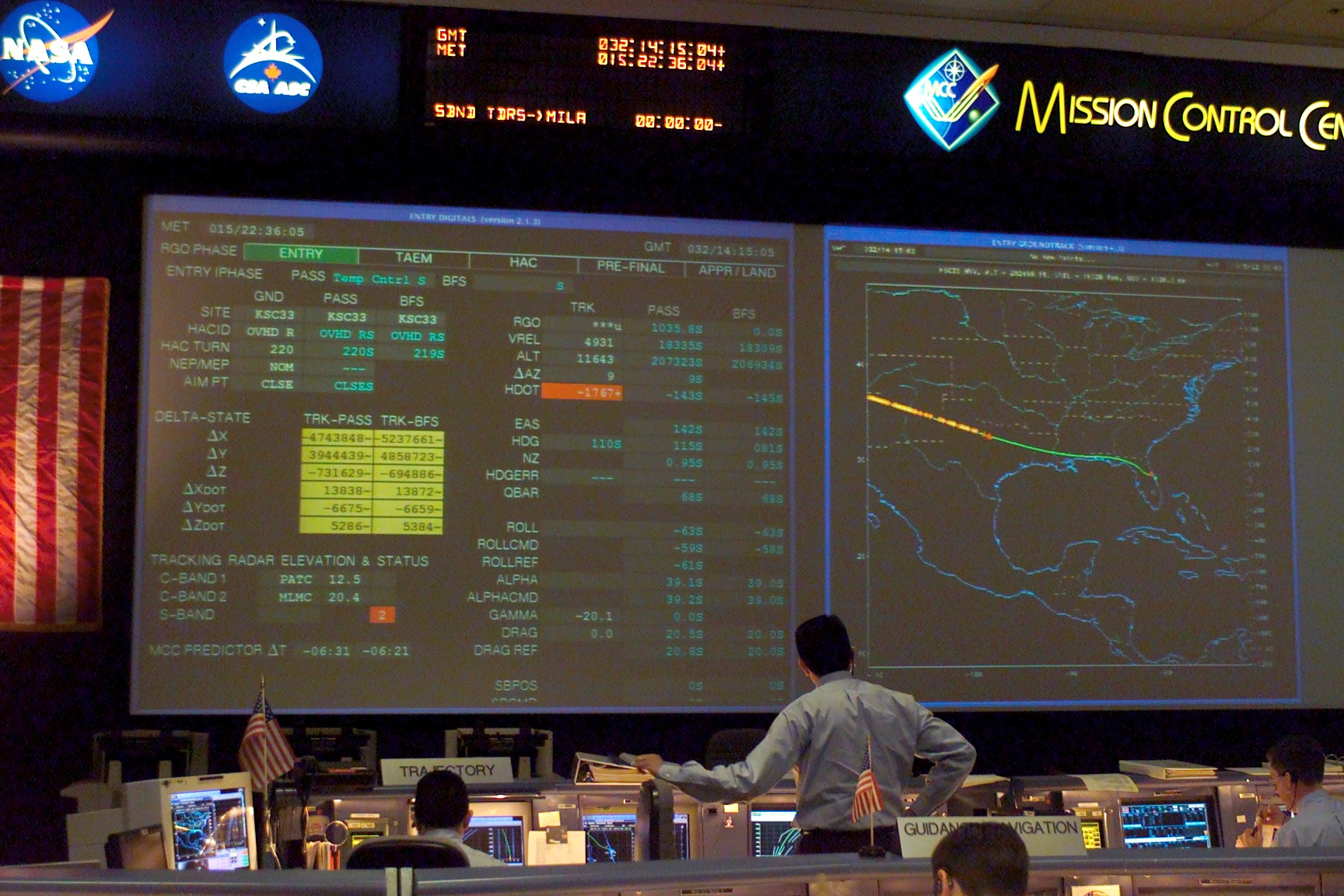
With telemetry broken, the atmosphere in Mission Control was becoming increasingly uncomfortable. Kling told Cain that there was no common thread between the tire pressure messages and the earlier hydraulic sensor failures; moreover, other instrumentation for monitoring the positions of the orbiter’s nose and main landing gear had also been lost. As the seconds of radio silence stretched longer, Cain asked Instrumentation and Communications Officer (INCO) Laura Hoppe how long she expected the intermittent “comm” to last. She admitted that she expected some ratty comm, but was surprised and puzzled by how protracted and “solid” it was.
“Columbia, Houston, comm check,” radioed Charlie Hobaugh at 9:03 a.m. His words were greeted only by static and by the echo of his own voice in the deathly-silent Mission Control. A minute later, he repeated the call. Again, there was no reply.
Half a continent away, at KSC, astronauts Jerry Ross and Bob Cabana were chatting outside the convoy commander’s van at the Shuttle Landing Facility (SLF), when they heard that communications with Columbia had been lost. At first, they were unconcerned—that is, until they were informed that powerful long-range radars at the Cape, which were supposed to lock onto the incoming orbiter at 9:04 a.m. and track its final approach, saw nothing coming over the horizon. In LeRoy Cain’s words, that offered the final punch-in-the-stomach confirmation that all hope was lost. Columbia was gone. “That was the absolute black-and-white end,” he said later. “If the radar is looking and there’s nothing coming over the horizon, the vehicle is not there.”
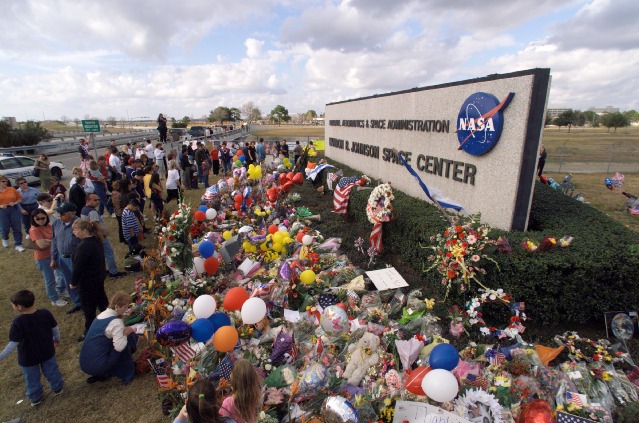
At the Cape, the assembled crowds saw the countdown clock tick to zero, then start ticking upwards as 9:16 came and went, with no sign of Columbia. No trademark sonic booms had been heard. No sign of the tiny black-and-white dot of the orbiter had been seen. Astronaut Steve Lindsey was one of the escorts for the STS-107 families and his blood ran cold. Something was terribly wrong.
Sitting behind LeRoy Cain in Mission Control, veteran flight director Phil Engelauf received a call from off-duty flight director Bryan Austin, who provided his own first-hand testimony of Columbia’s death throes. By this time, although no one in Mission Control had physically seen the evidence of the destruction, they had resigned themselves to it. At 9:05 a.m. EST, Cain had asked Flight Dynamics Officer Richard Jones when he could expect tracking data from the long-range radars in Florida. One minute ago, came the reply.
Now, as Engelauf relayed Austin’s emotional report to Cain, the flight director slowly shook his head, composed himself, and turned to the silent control room to declare an emergency. At 9:12 a.m. EST, he instructed Ground Control Officer Bill Foster to “lock the doors” and ordered flight controllers not to leave the building, but to begin preserving their data and writing up their logbook notes for use in the subsequent investigation. After checking with Jones that no further tracking had been acquired, Cain referred his team to their contingency plans—the plans that they and the STS-107 crew had worked in training, but which they hoped fervently would never be needed.
“OK,” Cain began, “all flight controllers on the Flight loop, we need to kick off the FCOH [Flight Control Operations Handbook] contingency plan procedure, FCOH checklist, page 2.8-5.” He then proceeded to talk them through the required actions: preserving logbook entries and display printouts, communicating only on the Flight loop, and restricting outside telephone calls and transmissions. “No phone calls, no data, in or out,” he told them.
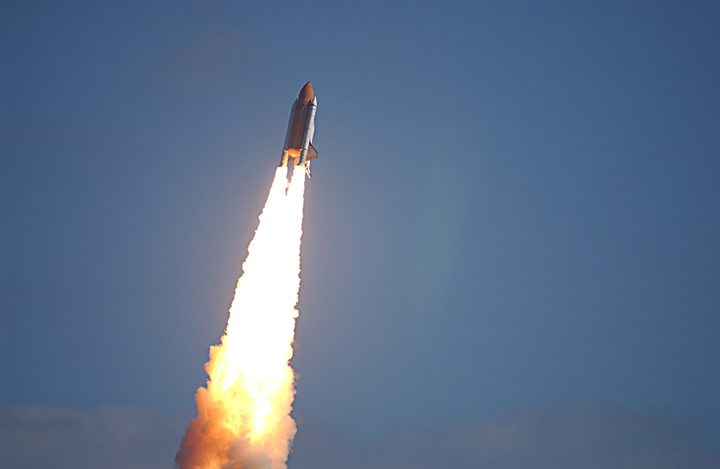
Nine hundred miles to the east, in Florida, the STS-107 families were shepherded from the landing site to the crew quarters by 9:30 a.m. It was left to Bob Cabana to break the terrible news—one of his worst jobs in his astronaut career. Mission Control, he explained, had not picked up any radio beacon signals which would have been activated if the crew had managed to bail out of Columbia. Regardless, the orbiter was at an altitude of around 40 miles and travelling at nearly 15,000 mph when it disintegrated. That alone offered not even the faintest hope of being survivable.
Later that morning, near Hemphill, Texas, Roger Coday found some human remains.
He said a brief prayer and built a tiny wooden cross by the roadside.
It would be only the first of many memorials to be laid over the coming hours, days, weeks, months, and years, to reflect upon the United States; second shuttle disaster, to understand what had gone wrong, and to rebuild shattered dreams and look again to the future.
.
.
.
FOLLOW AmericaSpace on Facebook and Twitter!
.
.
.




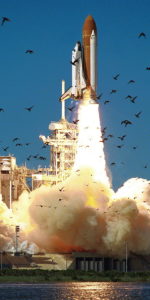
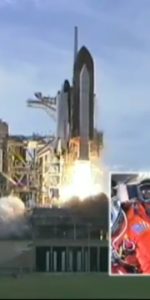
I seem to recall that had the crew and ground knew of the breach, a rescue attempt would have been problematic at best. Risking yet another shuttle and crew and a possible loss of that crew and shuttle would have been unimaginable.